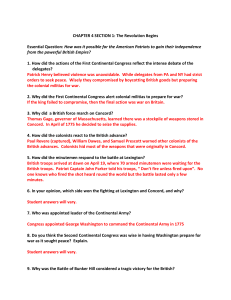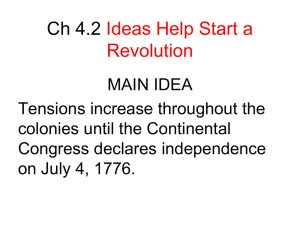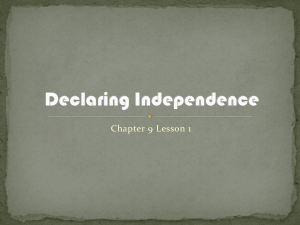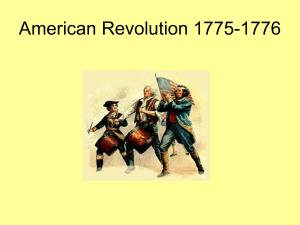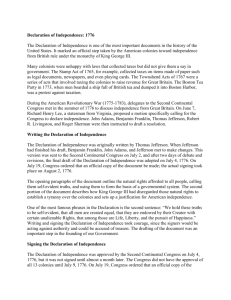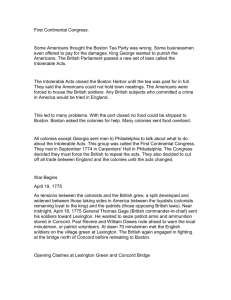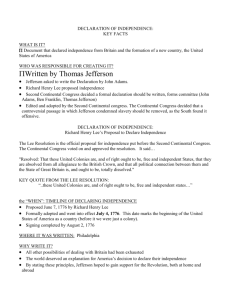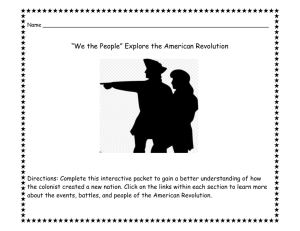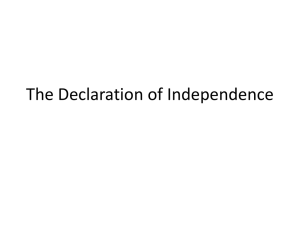Vocab 3 - Revolt to Revolution
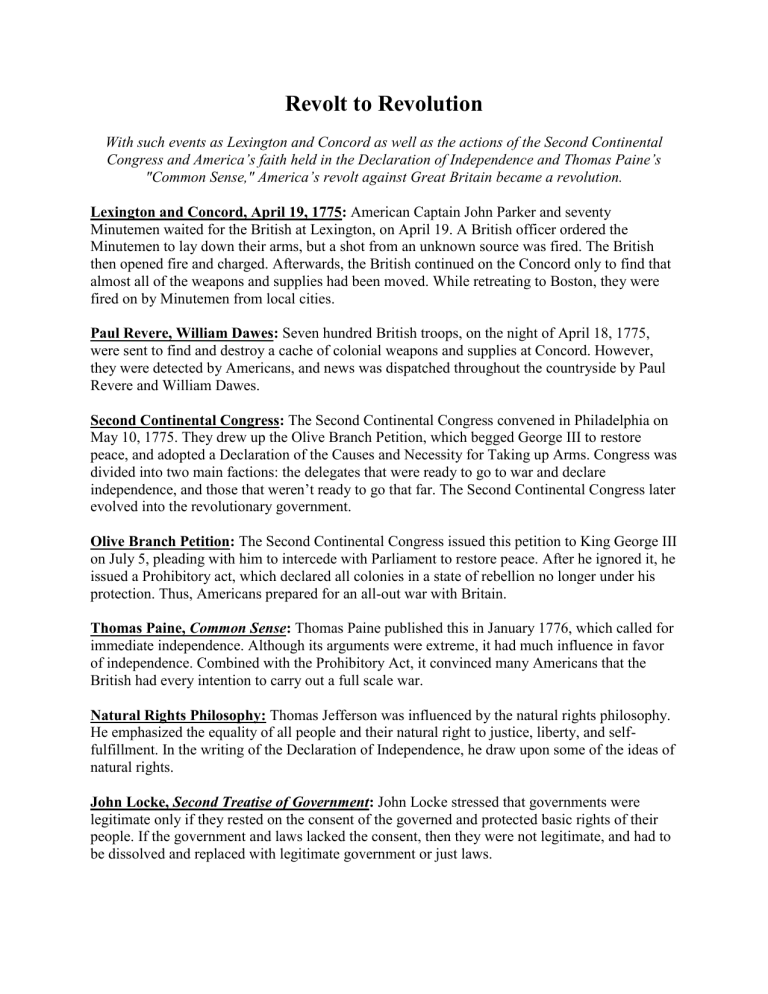
Revolt to Revolution
With such events as Lexington and Concord as well as the actions of the Second Continental
Congress and America’s faith held in the Declaration of Independence and Thomas Paine’s
"Common Sense," America’s revolt against Great Britain became a revolution.
Lexington and Concord, April 19, 1775: American Captain John Parker and seventy
Minutemen waited for the British at Lexington, on April 19. A British officer ordered the
Minutemen to lay down their arms, but a shot from an unknown source was fired. The British then opened fire and charged. Afterwards, the British continued on the Concord only to find that almost all of the weapons and supplies had been moved. While retreating to Boston, they were fired on by Minutemen from local cities.
Paul Revere, William Dawes: Seven hundred British troops, on the night of April 18, 1775, were sent to find and destroy a cache of colonial weapons and supplies at Concord. However, they were detected by Americans, and news was dispatched throughout the countryside by Paul
Revere and William Dawes.
Second Continental Congress: The Second Continental Congress convened in Philadelphia on
May 10, 1775. They drew up the Olive Branch Petition, which begged George III to restore peace, and adopted a Declaration of the Causes and Necessity for Taking up Arms. Congress was divided into two main factions: the delegates that were ready to go to war and declare independence, and those that weren’t ready to go that far. The Second Continental Congress later evolved into the revolutionary government.
Olive Branch Petition: The Second Continental Congress issued this petition to King George III on July 5, pleading with him to intercede with Parliament to restore peace. After he ignored it, he issued a Prohibitory act, which declared all colonies in a state of rebellion no longer under his protection. Thus, Americans prepared for an all-out war with Britain.
Thomas Paine, Common Sense: Thomas Paine published this in January 1776, which called for immediate independence. Although its arguments were extreme, it had much influence in favor of independence. Combined with the Prohibitory Act, it convinced many Americans that the
British had every intention to carry out a full scale war.
Natural Rights Philosophy: Thomas Jefferson was influenced by the natural rights philosophy.
He emphasized the equality of all people and their natural right to justice, liberty, and selffulfillment. In the writing of the Declaration of Independence, he draw upon some of the ideas of natural rights.
John Locke, Second Treatise of Government: John Locke stressed that governments were legitimate only if they rested on the consent of the governed and protected basic rights of their people. If the government and laws lacked the consent, then they were not legitimate, and had to be dissolved and replaced with legitimate government or just laws.
King George III: After the Battle of Bunker Hill, the people of Britain wanted retaliation, and
King George III, on August 23, proclaimed New England in a state of rebellion. In December
Parliament declared all colonies in a state of rebellion, and made their ships liable to seizure.
Richard Henry Lee’s Resolution:
Colonial leader Richard Henry Lee presented several formal resolutions to Congress on June 7, 1776. These resolutions called for independence and a national government. As a result, the Committee on Independence was formed to further accommodate his proposal.
Committee on Independence:
After Richard Henry Lee’s resolution on June 7, 1776, the
Committee on Independence was formed. Members included Thomas Jefferson, Benjamin
Franklin, John Adams, Robert Livingston, and Roger Sherman. Its purpose was to draft a statement of reasons for independence which led to the Declaration of Independence.
July 4 th , 1776 and The Declaration of Independence: Written by the Committee on
Independence, he Declaration of Independence contained a list of grievances placing the blame on George III. Additionally, it asserted certain natural rights: "Life, liberty, and the pursuit of happiness" and the "Consent of the governed" to revolt against tyrannical governments. The
English Revolution of 1688 and Enlightenment writers inspired some of the ideas in the
Declaration of independence.
Preamble of the Declaration of Independence: Written by the Committee on Independence in
1776, the Preamble to the Declaration of Independence states that "all men are created equal," and are furthermore allotted unalienable rights by God. Moreover, it is believed that this is a statement of faith displays wisdom; it’s not a fact revealing truth.
Slavery Clause in the Declaration of Independence: Two passages in Jefferson’s original draft were rejected by the Second Continental Congress in 1775. The first passage was an exorbitant reference to the English people, and the second passage was an attack on the slave trade.


